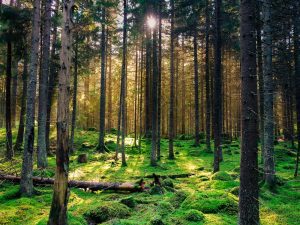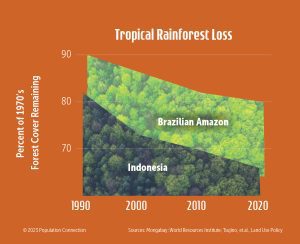April is Earth month, and whether you teach Kindergarten or AP Environmental Science, it’s the perfect time to teach about forests. Forests help regulate global climate, provide homes to countless species, and are critical to global sustainability. They can be studied at a global scale, in your own backyard, and everywhere in between. And in added benefit, forest learning can help cover a number of NGSS standards – think Human Impacts on Earth’s Systems (NGSS ESS3C) and Interdependent Relationships in Ecosystems (NGSS LS2A).
With forests being an important and popular topic to teach, there are loads of classroom resources out there to sift through. So many, in fact, that it can feel overwhelming to find high quality and interesting forest lessons. After much internet scouring, we’ve come up with a few activities for teaching forests that stand out as being unique, interactive, and fun. We hope that this Earth month, this easy list will help you find some time to teach about the trees.
Forest Lessons for Elementary Grades
1. Collaborative Role-Play about Tree Structure and Function
In this memorable lesson, students don’t just learn about trees, they ‘are’ the tree. By actively role-playing the different parts of trees and the purposes they serve, students learn about tree structure and function. This foundational knowledge will stick with them once they start learning about more complex forest systems. Check out the early childhood version here, and the upper elementary version here.
2. Interactive Photosynthesis Lesson
Understanding photosynthesis is the basis for grasping the carbon cycle. Instead of looking at simple diagrams to teach this phenomenon, get students moving with a game of Photosynthesis Tag. Students representing a tree must tag carbon dioxide molecules (other students), and turn them into oxygen – a very simple, but memorable way to teach this foundational concept. Planting more ‘trees’ (having more students be ‘it’) will capture the CO2 more quickly!
3. Transcribing Bird Songs
Young people come to appreciate forests by spending time in them and making observations. So it’s no surprise that there are many forest lessons that recommend journaling, recording, and illustrating forest habitats. But the focus on sound in this lesson, Forest Karaoke, is what sets it apart – students listen to bird songs in a forest and use lines, words, and movement to record what they hear. Connecting to nature in this unique way is an important step in learning about all forests have to offer.
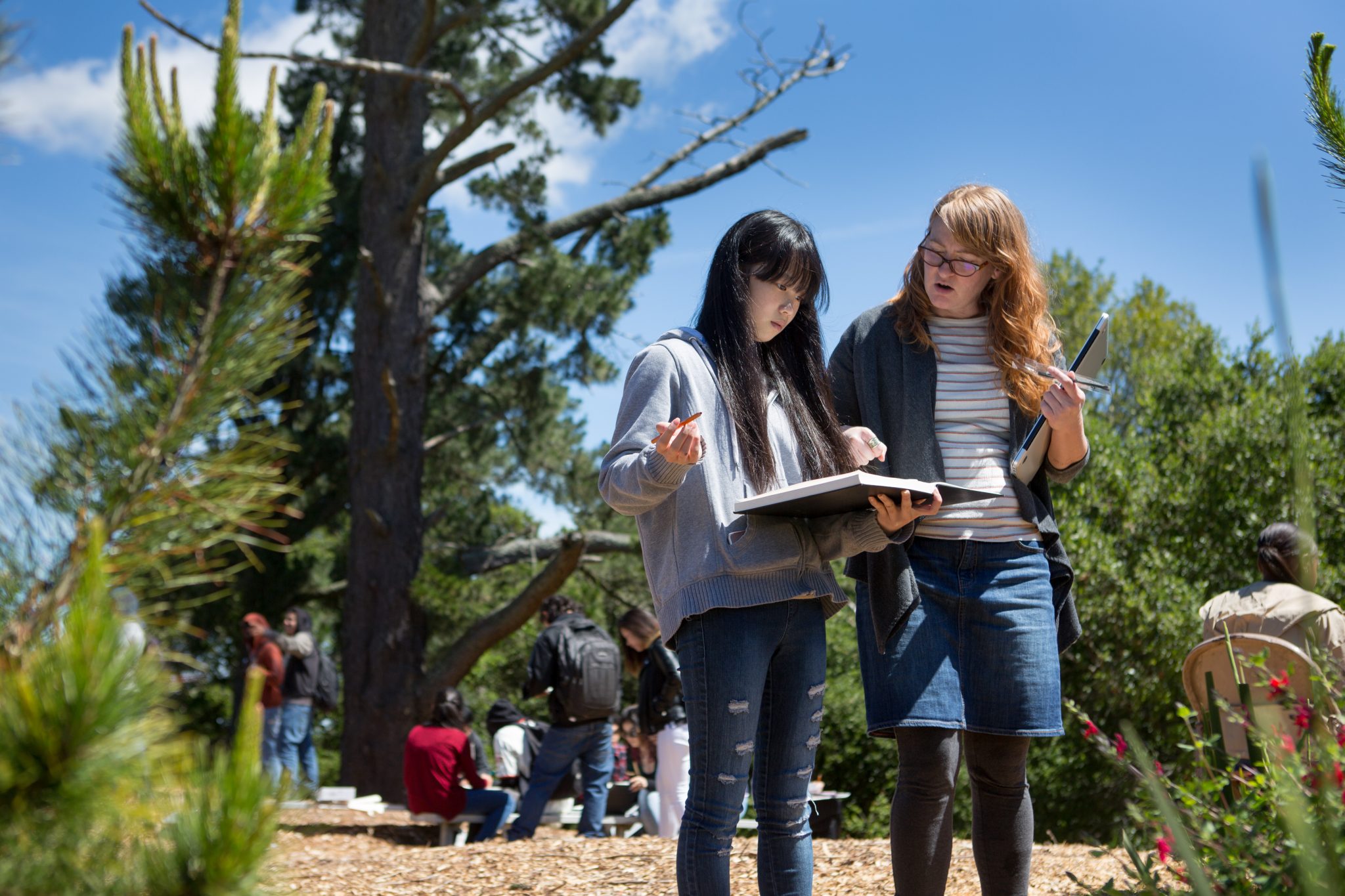
4. Forest Supply and Demand
Forests around the world are in trouble, and upper elementary students can start to think about strategies for sustainable management. In the lesson Timber!, students use popsicle sticks to model how high demand for timber impacts a forest ecosystem, and then strategize changes to supply and demand that might save the forest’s fate. This early introduction to sustainable forestry will go a long way to building a robust understanding of the demands on the world’s trees.
Forest Lessons for Secondary Grades
5. Using Technology to Study Forests
Technology takes center stage in the lesson Seeing the Wood for the Trees, from The Nature Conservancy. Through tools like videos, data interactives, and Google Earth, students learn about historic forest cover in the U.S. and compare forests that have been logged selectively versus those that have not.
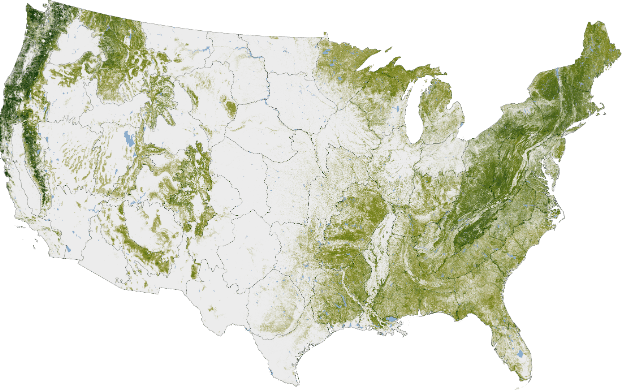
6. Measuring Carbon Storage
Trees are a critical link in mitigating climate change and in this lesson, the idea that trees store carbon dioxide comes to life. Using this fillable activity packet on Trees and Climate Change, students first learn some basics about photosynthesis and climate change. Then, students get outside and measure the carbon storage capacity of the trees around their school. A little bit of math and a lot of fun make this a memorable and valuable activity to add to any forests unit!
7. Biodiversity in Tropical Forests
Tropical forests are biodiversity hotspots, serving as home to over half of all species on Earth. In the biodiversity lesson World of Difference, students use probability to compare the biodiversity of tropical forests and temperate forests and see the how the wildlife in each forest is impacted by deforestation. A follow-up activity has students creating persuasive arguments for protecting species’ that are being threatened by deforestation.
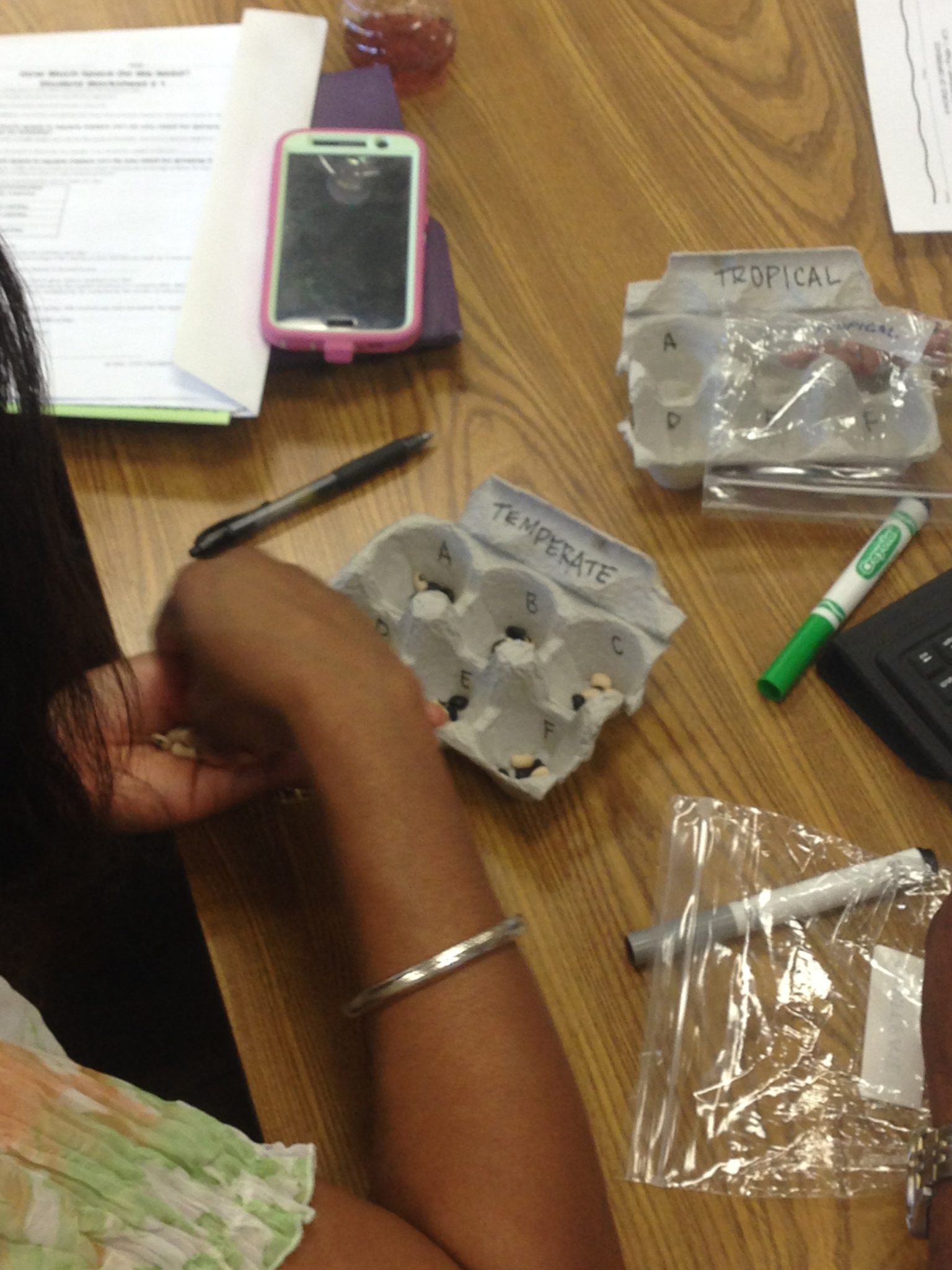
Students use beans in the lesson, World of Difference, to explore the biodiversity of temperate and tropical forests.
These Forest Lessons are Perfect for Earth Day
So, there you have it. With these fun and memorable forest activities at your fingertips, there’s no internet scrolling needed. All that’s left to do is head outside, take a deep breath (thank you, trees!) and give one of them a try this Earth Day.
Image credits: Outdoor activity (High school girl with teacher outside by All4Ed is licensed under CC BY-NC 4.0); Map (Woody biomass in the US by NASA Earth Observatory is Public Domain)



